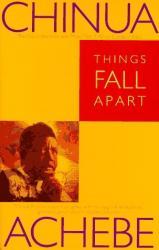
Things Fall Apart is about a Nigerian man, Okonkwo, who watches as his village is destroyed by European missionaries. Once a feared and respected man in his village of Umuofia, Okonkwo is reduced to eventually taking the orders of white men. Okonkwo is a hard and emotionless man who believes that anything that is not masculine is weak and therefore unworthy. When missionaries come to Umuofia, Okonkwo urges his fellow villagers to resist the attempts to diminish their culture and replace their government, but he's met with little support. Eventually, Okonkwo is banned, and when he returns, his village has completely changed.
I liked Things Fall Apart because it's a great book that challenged the idea of African savagery and portrays African culture, specifically Nigerian culture, as complex and intricate, and not the 'uncivilized' society many people view Africans as today. Okonkwo is an interesting character because his unwillingness to adapt to the new change represents an internal struggle many pre-colonized Africans faced in the wake of colonization. The ending is symbolic because it represents the ultimate death of culture as a result of European exploration.
Overall, the novel provides a beautiful insight into another culture often ignored in mainstream media.
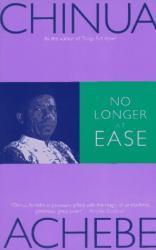
No Longer at Ease is the second installment in the African trilogy series. It is preceded by Things Fall Apart and follows the life of Obi, Okonkwo's grandson. Obi leaves his village in Nigeria to pursue an education in Britain where he meets Clara and falls in love with her. He returns to Nigeria and gets a job in civil service with the help of the board of elders. Obi is conflicted between his African culture and Western lifestyle, and heavy in debt, he takes a bribe.
Just like his grandfather, Obi is strong-minded and stubborn. He intends on marrying Clara although she is an osu, and begins taking bribes when he cannot pay his debts. He questions Nigerian traditions, and often compares Africa to Britain, ultimately positioning him in a place where he finds it nearly impossible to balance both cultures. However stubborn and sometimes reckless Obi is, he's a symbol of generational growth: unlike his grandfather and father, Obi ultimately understood that one culture was not better than the other, and change was imminent. Okonkwo, Nwoye, and Obi symbolize the different industrial stages of Nigeria and the social turmoil that followed, and they show the theme of western versus eastern culture clashes.
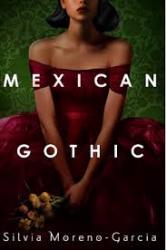
“Mexican Gothic” follows Noemí Taboada’s mission to uncover the dark secrets of the High Place. Her journey begins when she receives a mysterious letter from her cousin with talk of poison and ghosts. Upon arriving, the Doyle household proves to be untrustworthy with the exception of the family’s youngest son. The Doyle family hid prying eyes behind the walls of the High Palace but Noemí’s sleuthing unlocks a wave of violence and madness.
I enjoyed this book and was hooked from the beginning. I recommend this book for people who enjoy reading about mysteries and paranormal activity. There is a hint of romance but the plot does not revolve around that.
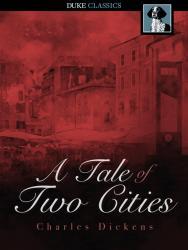
A Tale of Two Cities by Charles Dickens is one of the most popular books of all time, with over 200 million copies sold to date. The novel is set in London and Paris before and during the French Revolution and depicts the plight of the French peasantry demoralized by the French aristocracy, and many unflattering social parallels with life in London during the same period. The main characters are Charles Darnay, a French aristocrat who falls victim to the indiscriminate wrath of the revolution despite his virtuous nature, and Sydney Carton, a British barrister who endeavors to redeem his ill-spent life out of his unrequited love for Darnay's wife, Lucie Manette.
A Tale of Two Cities
One of Charles Dickens's most famous novels, A Tale of Two Cities is also one of his shorter (and better) ones. It begins with an unflattering portrait of an England overrun by highwaymen and courts which are almost as rapacious, and soon shows us a France where things are even worse. Nowhere does Dickens demonstrate his marvelous ability to capture moods and sentiments better than in his depiction of a seething, oppressed populace on the verge of boiling into violence.
And now that the cloud settled on Saint Antoine, which a momentary gleam had driven from his sacred countenance, the darkness of it was heavy—cold, dirt, sickness, ignorance, and want, were the lords in waiting on the saintly presence—nobles of great power all of them; but, most especially the last. Samples of a people that had undergone a terrible grinding and regrinding in the mill, and certainly not in the fabulous mill which ground old people young, shivered at every corner, passed in and out at every doorway, looked from every window, fluttered in every vestige of a garment that the wind shook. The mill which had worked them down, was the mill that grinds young people old; the children had ancient faces and grave voices; and upon them, and upon the grown faces, and ploughed into every furrow of age and coming up afresh, was the sigh, Hunger. It was prevalent everywhere. Hunger was pushed out of the tall houses, in the wretched clothing that hung upon poles and lines; Hunger was patched into them with straw and rag and wood and paper; Hunger was repeated in every fragment of the small modicum of firewood that the man sawed off; Hunger stared down from the smokeless chimneys, and started up from the filthy street that had no offal, among its refuse, of anything to eat. Hunger was the inscription on the baker's shelves, written in every small loaf of his scanty stock of bad bread; at the sausage-shop, in every dead-dog preparation that was offered for sale. Hunger rattled its dry bones among the roasting chestnuts in the turned cylinder; Hunger was shred into atomics in every farthing porringer of husky chips of potato, fried with some reluctant drops of oil.
After spending eighteen years in the Bastille, a French country physician is released and allowed to emigrate to England, where he is reunited with the daughter he has never met. Lucie Manette, typical of Dickens women, is a pure-hearted angel who is instantly devoted to him despite never having known him. Through various plot twists, Lucie marries Charles Darnay, who turns out to be the expatriate nephew of the Marquis who had Doctor Manette imprisoned, in a backstory eventually revealed to us with an even more improbable plot twist.
Once the Revolution begins, Charles Darnay is lured back to Paris to save the life of one of his former servants. Naturally, he is promptly imprisoned and put on trial. His family, including Lucie and their daughter, as well as pretty much the entire cast of the novel thus far, follows him, and are all put in peril of meeting Lady Guillotine. It was the popular theme for jests; it was the best cure for headache, it infallibly prevented the hair from turning grey, it imparted a peculiar delicacy to the complexion, it was the National Razor which shaved close: who kissed La Guillotine, looked through the little window and sneezed into the sack. It was the sign of the regeneration of the human race. It superseded the Cross. Models of it were worn on breasts from which the Cross was discarded, and it was bowed down to and believed in where the Cross was denied.
Dickens's stories are full of improbable plot twists. Characters who met once will always meet again. The coincidences in A Tale of Two Cities almost defy the reader's suspension of disbelief -- but it's Dickens, and Dickens can be forgiven a lot. He shows the pitiless brutality of the French aristocracy and the suffering of the people until your sympathies are entirely with them, and when the tumbrils begin rolling through the streets you can't but think that the aristos had it coming and then some. But then the Terror is unleashed -- and personified in the form of Madame Defarge -- and the oppressed turn just as brutal and pitiless. This is the only way Dickens could have brought our sympathies back to the main characters, who after all, have lived pretty safe and privileged existences even if they weren't the evil "Monseigneur" who ran children beneath the wheels of his carriage. And let's face it, Charles Darnay really picks up the Idiot Ball when he goes back to Paris.
I doubt there are many people who don't know how the novel ends, but while it's a story of redemption and self-sacrifice, I was not nearly as touched by Sydney Carton's heroism as I was by the Madame Defarge vs. Miss Pross
smackdown, which I think is one of Dickens's best climaxes ever, and which none of the film adaptations (below) did justice:
"You might, from your appearance, be the wife of Lucifer," said Miss Pross, in her breathing. "Nevertheless, you shall not get the better of me. I am an Englishwoman."
Madame Defarge looked at her scornfully, but still with something of Miss Pross's own perception that they two were at bay. She saw a tight, hard, wiry woman before her, as Mr. Lorry had seen in the same figure a woman with a strong hand, in the years gone by. She knew full well that Miss Pross was the family's devoted friend; Miss Pross knew full well that Madame Defarge was the family's malevolent enemy.
"On my way yonder," said Madame Defarge, with a slight movement of her hand towards the fatal spot, "where they reserve my chair and my knitting for me, I am come to make my compliments to her in passing. I wish to see her."
"I know that your intentions are evil," said Miss Pross, "and you may depend upon it, I'll hold my own against them."
Each spoke in her own language; neither understood the other's words; both were very watchful, and intent to deduce from look and manner, what the unintelligible words meant.
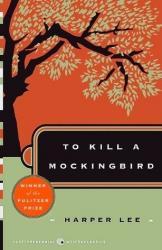
The amount of description in To Kill a Mockingbird by Harper Lee is
amazing. Like, Sherlock Holmes good. The characters are well mapped out, the
interactions felt thought through, and the relationships are believable. I
personally didn’t get all the detail the first read through, just from
enjoying the characters too much. The history is realistic, considering the
time period and how poorly the blacks were treated. All things considered,
this is an engaging read with some actual history.
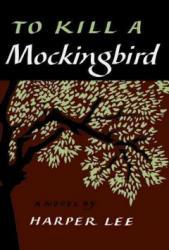
"To Kill a Mockingbird" by Harper Lee creates a creative look on segregation in life in the 1930's. As the story goes along, Scout and her brother Jem experience many changes throughout the summer of 1935. Their father, Atticus Finch, defends a black man after the man was accused of an unsolved crime. The event creates much thought and debate on the subject of segregation. The book has many great turns and the potential of characters was used to a full extent. I highly recommend the read for it will give readers an excellent idea of how life was those many years ago.
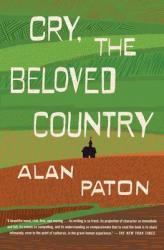
Cry, the beloved country
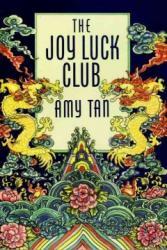
The Joy Luck highlights mother-daughter relationships in the midst of generational conflicts. The Joy Luck daughters, Jing-mei, Waverly, Rose, and Lena, are first generation Chinese-Americans living in San Francisco during the 1980's. They feel their mothers are overbearing and do not understand their desire for independence. Ironically, their mothers feel they are losing their Chinese identity and became Americanized.
I love this book! The book is structured like the traditional Chinese game mahjong, and each of the daughters and mother's stories are complex and thought-provoking. Although it's set back in the 80's, a lot of its themes regarding mother-daughter relationships and intergenerational conflicts are relevant amongst first-generation immigrants and families today. Among the eight main characters, Jing-mei is my favorite, because she's really the only daughter that fully embraces her hyphenated identity.
This book is different because it tells the story of eight women who are so similar yet so different at the same time. I really recommend this to anyone looking for a female dominated novel!
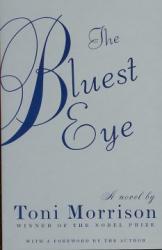
The Bluest Eye is about a young African-American girl named Pecola living in 1940's Ohio. Pecola lives with her brother and abusive parents who constantly tell her she is ugly because of her dark skin and kinky hair. On top of that, the children at her school bully her for the fact that her father is an alcoholic. All her life, Pecola has wanted blue eyes to feel pretty. Her only friends, Freida and Claudia try to defend her against the colorism in their community, but Pecola is unable to embrace her features and becomes obsessive over her desire for blue eyes.
One of the reasons I read this book is because of Morrison's writing style and her thematic elements. The book is very intellectually stimulating and gave me better insight into colorism and how it is still largely prevalent today in the African-American community. I really liked how Morrison used a young girl as a main character to show how these feelings of low-esteem and poor body image are started at a young age, and how the people around us influence our thoughts and feelings.
There are a lot of complex characters and you get to hear each of their stories about why they're the way they are. Claudia is my favorite character because she represents women and girls who challenge our ideas of beauty. The ending was sad, but it really brought light to how damaging our obsession with beauty is.
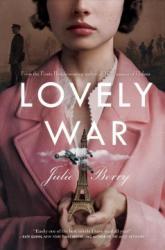
After being caught with her lover, Ares, Aphrodite tells the stories of two couples that fell in love during World War 1. James and Hazel met at a party that Hazel was playing piano for. They start to go on dates and they really like each other, but James is shipped of to the battlefield. Hazel decides to join the Red Cross to be closer to James. There she meets Colette, who becomes a fast friend.
This book was amazing! I loved the perspective of the gods on the story. They often make appearances to discuss specific parts of the story relating to the gods' affinities. I also loved seeing the couples be together, even during their struggles. While reading this book I cried multiple times and couldn't be happier about that.
I would also highly recommend the audiobook. There were so many different narrators it truly felt like I was in the story. One of the characters passions is composing music and in the audiobook you can actually hear the music! It is a wonderful experience.
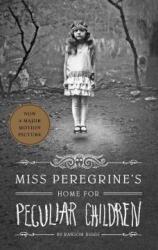
Jacob's grandfather has always told crazy stories. Stories about faceless monsters and kids with mysterious abilities. When he was younger Jacob believed these stories because his grandpa had scary pictures of these strange kids, but as he got older Jacob thought these were just little kid stories until a family tragedy brings one of those monsters from his childhood to life. This tragedy gets him to travel to a small island off the coast of Whales, where he begins to discover more about his grandpa the peculiar children from his stories.
The atmosphere that the author created for this book was amazing. You can feel eeriness of the things that Jacob sees through the pages. It is only enhanced by the pictures of strange things scattered throughout the story. The unique characters and idea held my attention completely and the fast-paced plot made me think it was over to soon. This book is part of a long series that I can't wait to continue!
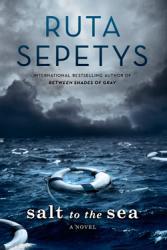
Salt to the Sea is about 4 people who are running from their past in the midst of WWII. Joana is a nurse fleeing from the dangers of Lithuania, with the hope that a ship will take her out of Europe. Florian is on the run from a mistake he made back in Germany also looking for the chance to escape without anyone finding him and taking him back to Germany. Emilia has finally decided to flee from the family that was taking care of her after the woman and her daughters betray her trust. Alfred is escaping reality by joining the German fleet to escape the mistake he made that cost him his girlfriend and his sanity. As the book continues all the character's paths join and they meet on the Wilhem Gustoff- a bigger tragedy than the sinking of the Titanic. The ship that promises safety, ends in tragedy. This is my favorite author, and out of all her books, this one is my absolute favorite. The character's stories blend together to make all the little plots into one overarching plot which I think is really cool. The chapters switch off narrators so you get to see the story in different perspectives. I like how the author shows a different side of the war than other WWII books where Germany is portrayed as the enemy and not as a country also in war. In this book, many of the people also fear Russia more than Germany because Russia was the one attacking and not helping and Germany was the one evacuating people. This makes the book different and I think more interesting. This is a really good book and it is worth a try.
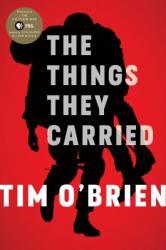
The Things They Carried is a memoir by Tim O'Brien about his experiences as an American soldier fighting in the Vietnam War. O'Brien was chosen to be drafted in 1968. This incident was extremely stressful for O'Brien who had taken a stand against the war, yet didn't want to disappoint his community. He pondered running away to Canada, but eventually decided to fight. The Things They Carried is a series of stories that are so well written. The work is a bit hard to understand just because O'Brien wrote it in a way that is not completely nonfiction. In the book, he explains this concept more in depth. Overall, I thought this book was a very well written, interesting, and educational story regarding the horrors of war from O'Brien's perspective in Vietnam.
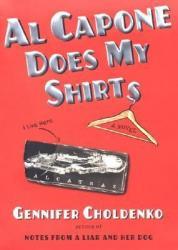
Al Capone Does My Shirts was a required summer reading book for me this year. The plot of the story was how an eleven-year old boy named Moose left his San Francisco home to live on the prison island Alcatraz because his father had to relocate there for work. Moose’s sister Natalie, who sadly suffered from autism, was trying to get into a special school, but the principal would not let her join. Moose tries to get her into the school, while trying to still play baseball and do other things on his own.
On a scale of five stars, I would give it a four for the following reasons:
1. The plot was easy to follow, but at the same time you never knew what was going to happen next.
2. The character development was excellent, because you could easily relate and understand the characters' predicaments.
3. I thought the book was clever, funny, and meaningful.
For all of these reasons, I would give Al Capone Does My Shirts by Gennifer Choldenko four stars.
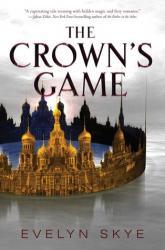
The Crown's Game is a Russian inspired fantasy set in the 1800's. It's told in duel-perspective from Vika and Nikolai, the only enchanters left in a country deprived of magic, they're both competing for the position of Imperial Enchanter through and ancient competition called the Crown's Game. A game where there can only be one winner and the other competitor is sentenced to death.
I really enjoyed the historical setting of the book. As well as the politics we get to see among the royal family. I like that it was told in duel-perspectives because it was interesting to see what both of the main characters are thinking. Also because it adds to the tension between the two characters and intrigue to the plot.
I think the book could have benefited from clearly labeling what perspective each chapter was told from, although I don't think it was that big of an issue because after a few sentences you could tell what the perspective was. Also some of the descriptions at the beginning of the book are a bit cheesy but the issue goes away as the book progresses.
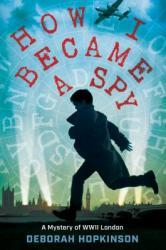
On his very first assignment as a civil defense messenger in World War II London, Bertie Bradshaw finds the diary of a spy lying in the street. He eagerly reads about the young spy’s training and how she parachuted into France to assume her new covert role. Things soon begin to sound dangerous as one by one her fellow agents are captured by the Nazis. Then the diary suddenly changes into code.
Bertie decides to trust a gutsy American girl, Eleanor, and his best friend David, who is Jewish, with the secrets in the diary. In a race against time, they must try to decode the final messages and then track down not only the spy who wrote them but also the traitor who is leaking information to the Nazis - information so vital that it will affect the success of the invasion of France and the lives of countless allied agents.
I immediately felt affinity for Bertie because he is a believable thirteen-year-old, forgetting his helmet and his training at first but then gaining courage and confidence as the story progresses. Bertie is also struggling with what seem to be panic attacks, stemming from the bombing of his house and the separation of his family, which makes his determination all the more admirable. I also enjoyed Little Roo, Bertie’s trained rescue dog, who has more to do with the success or failure of the venture than you might think.
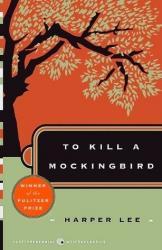
"To Kill a Mockingbird" is an essential piece of literature. It tells a story that highlights the darkness of America's past, through the innocent eyes of a young girl. With this type of narrator, who almost only understands pure truth, joy, and rage, it is possible for readers to feel what she feels, and be brought into her small world (Alabama during the Great Depression) with simple, yet beautiful writing. The story itself is touching, and focuses on themes of family, racism, and solidarity. Aside from its essentiality in explaining America's history, it also can be read as a coming of age story, where the characters begin to see the harsh reality of the world in which they grew up, and in which they created lasting memories and relationships. It will make you laugh, cry, and feel.
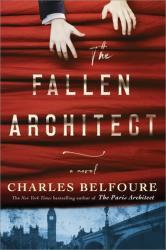
Douglas Layton was a famous architect and a hero until the balcony of London’s Britannia Empire Theater collapsed. The balcony caused many to lose their lives and Douglas Layton served prison time for it. After serving his time in prison Douglas is on a mission to find out who was truly responsible for this tragedy. He gets a job at the same theater and gets a brand new identity to disguise himself. Douglas gathers more evidence that this incident was intentional. He must tread the water carefully and not let anyone figure out who he is. Fallen Architect is a suspenseful mystery book that will grip the reader's interest and will have them craving for more.
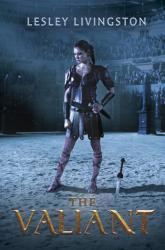
The Valiant follows the journey of a Celtic warrior from a princess to a slave to a famed gladiatrix. Throughout the story struggles with family, love, and trust. The warrior Fallon faces fierce rivals and feuds within Rome and even her ludus. Not long after arriving in her ludus she finds someone she thought was dead acting as master of the ludus. Eventually she meets Cesar the mastermind behind the fall of her home and the owner of her ludus.
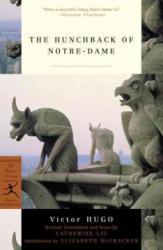
The Hunchback of Notre Dame is about four men who are captivated by a mysterious gypsy dancer. The story begins on a holiday where a play is going on until everyone becomes distracted by the gypsy girl dancing in the square. This is where we meet Esmeralda the gypsy and Gringore the playwright. Many things happen until Esmeralda ends up meeting Pheobus, a soldier, who is very egocentric, when he saves her from the deformed bell ringer - Quasimodo - and a priest named Claude Frollo. Esmeralda is soon accused of witchcraft and is sentenced to be hanged. Fortunately, she is able to find shelter in Notre Dame before that can happen. Many want to kill her, but some want to save her.
I had to read this book for school, and my English teacher recommended it. And the first chapter was not very interesting so I became skeptical, but at the end, I thought the book was really good. There are some parts where the author goes into detail about a location to better help set the scene, and this is where I struggled to focus on the book, but you should push forward because the story line is worth it. The Disney movie did not do this book justice and there is some adult-themed content in the book so I would not recommend this book to middle-schoolers or younger. I do think that sooner or later, everyone should at least give this book a try because it really made me think.


